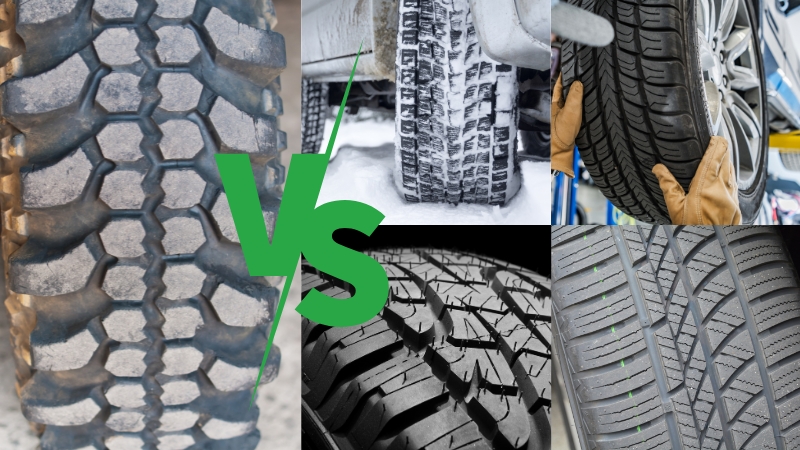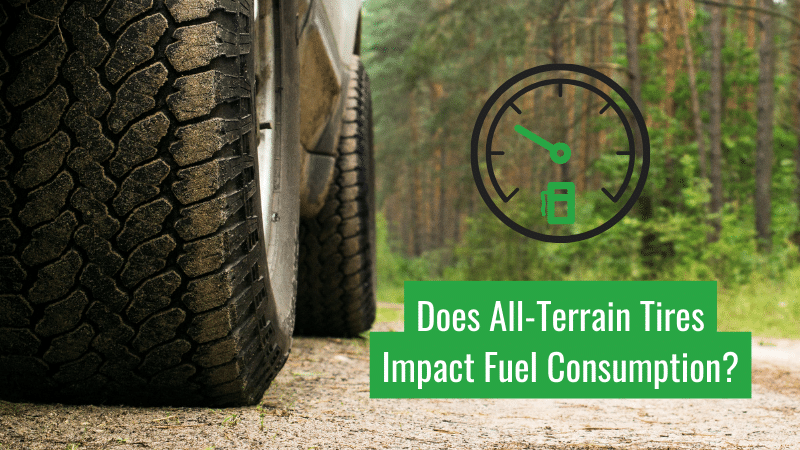When considering a tire upgrade for your vehicle, you might wonder if choosing all-terrain tires will impact your fuel consumption.
It’s a valid concern, as fuel efficiency is an essential factor when selecting the best tire for your needs.
All-terrain tires have a more aggressive tread pattern compared to regular passenger car tires, which allows for better grip on various surfaces, including off-road conditions. This feature, however, can potentially affect your gas mileage. While they don’t consume as much fuel as mud terrain tires, they still may not be as fuel-efficient as their highway counterparts.
Tire-related factors account for 20% to 30% of a vehicle’s fuel consumption and a significant portion of road vehicle CO2 emissions. Therefore, understanding how all-terrain tires impact fuel consumption is crucial when making a decision about your vehicle’s tire upgrade.
Effects of All-Terrain Tires on Fuel Consumption
In this section, we will discuss the factors contributing to fuel consumption when using all-terrain tires, specifically:
Rolling Resistance
All-terrain tires often have a higher rolling resistance compared to highway or street tires. Increased rolling resistance contributes to a decrease in fuel efficiency, as your vehicle needs to exert more energy to overcome it.
Low rolling resistance tires, which are designed to reduce rolling resistance, can help improve your fuel economy. However, all-terrain tires prioritize traction and durability over low rolling resistance, making them less fuel-efficient than their street counterparts.
Tread Design
The tread design of all-terrain tires is more aggressive compared to highway or street tires. While this design provides better traction and handling on rough roads, it can also contribute to decreased fuel efficiency.
The deeper and more extensive tread patterns create more rolling resistance, which increases fuel consumption. Shallow tread patterns found in fuel-efficient tires reduce rolling resistance and help to conserve fuel.
Contact Patch
The contact patch is the area of the tire that makes contact with the road. All-terrain tires tend to have a larger contact patch compared to street tires, which can lead to increased traction and off-road stability.
However, a larger contact patch also increases the amount of friction between the tire and the road, which can result in higher fuel consumption. Fuel-efficient street tires typically have a smaller contact patch, resulting in lower rolling resistance and improved fuel economy.
Air Pressure
Maintaining the correct tire pressure is crucial for optimizing fuel efficiency. All-terrain tires may require different air pressure levels compared to street tires, which can impact fuel consumption. Underinflated tires can increase rolling resistance, while overinflated tires can reduce traction and handling.
Always refer to your vehicle’s owner’s manual for recommended tire pressure levels and check your tire pressure regularly to ensure optimal fuel efficiency.
In summary, all-terrain tires provide improved traction and durability for off-road conditions, but their design contributes to a decrease in fuel efficiency compared to highway or street tires.
Factors such as rolling resistance, tread design, contact patch, and air pressure all contribute to the increased fuel consumption associated with all-terrain tires.
Comparing All-Terrain Tires to Other Tire Types

In this section, we’ll compare all-terrain tires with other types of tires to understand the impact of fuel consumption on each. Below are the sub-sections for each tire type:
Low Rolling Resistance Tires
Low rolling resistance tires are designed to minimize wasted energy as your tire rolls. They improve your fuel efficiency by requiring less energy to power your vehicle. Compared to all-terrain tires, which have larger tread blocks and more aggressive patterns, low rolling resistance tires may offer better fuel efficiency.
Passenger Car Tires
Passenger car tires are a common choice for everyday driving. While not specifically designed for fuel efficiency, they generally provide better mileage than all-terrain tires due to their less aggressive tread patterns and lighter construction.
Off-Road Tires
Off-road tires are built for added durability and traction in off-road conditions. They typically have larger and more aggressive tread blocks than all-terrain tires, which can contribute to higher rolling resistance and lower fuel efficiency when driving on paved roads.
All-Season Tires
All-season tires balance the needs of both wet and dry pavement, while also providing traction for light snow. These tires usually have a good compromise between fuel efficiency and off-road capabilities, although all-terrain tires may provide better off-road performance.
Winter Tires
Winter tires are designed to offer excellent traction on ice and snow. Their soft rubber compounds and aggressive tread patterns can increase rolling resistance, which may result in lower fuel efficiency compared to all-terrain tires when not driving in winter conditions.
Mud-Terrain Tires
Mud-terrain tires are engineered to handle muddy and rocky terrain, featuring aggressive tread patterns and strong sidewalls. These features may lead to increased rolling resistance and reduced fuel efficiency compared to all-terrain tires when driving on regular roads.
In Conclusion
To sum up, each tire type offers different levels of performance and fuel efficiency based on their unique characteristics. All-terrain tires provide a balance between on- and off-road capabilities, but may not be the most fuel-efficient choice under certain driving conditions.
It’s essential to consider your driving habits and requirements when choosing the right tires for your vehicle.
Hi, my name is Niklas, the head content creator & CEO of Whirling Wheelz. I am very interested in vehicles of all kinds, mainly cars. I have a car mechanics degree from high school and a big hobby of mine is to follow the WRC (World Rally Championship) both online and through travel.

